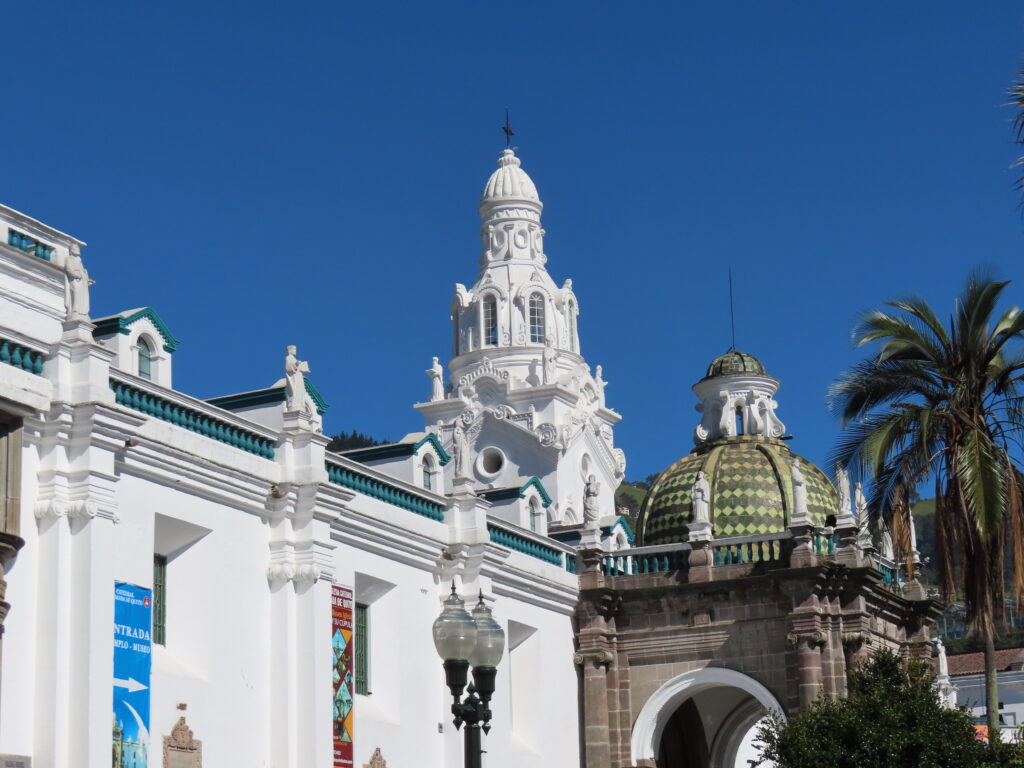Tras los terremotos de 1755 y 1795, la Catedral de Quito fue reconstruida bajo la dirección del arquitecto español Antonio García, quien introdujo el neoclasicismo en la ciudad. Se erigió el templete catedralicio, la escalinata semicircular y el atrio con antepecho festoneado, que refuerzan su conexión con la Plaza Grande. La ubicación irregular del templo, adaptada a la quebrada de Sanguña, definió su disposición singular, con tres naves, capillas laterales y un campanario adosado.
A lo largo del tiempo, la catedral ha recibido numerosas modificaciones, como la reconstrucción del campanario tras el terremoto de 1868, culminada en 1930 con un diseño prusiano. Entre sus símbolos destacan el “Gallo de la Catedral” y las placas conmemorativas que resaltan hechos históricos como el descubrimiento del Amazonas y el título de Quito como Patrimonio de la Humanidad. Desde sus cúpulas se contempla una vista privilegiada de la ciudad, reflejando su importancia histórica y espiritual.

Following the earthquakes of 1755 and 1795, Quito Cathedral was rebuilt under the direction of the Spanish architect Antonio García, who introduced Neoclassicism to the city. The cathedral’s small temple, the semicircular staircase, and the atrium with a scalloped parapet were built, reinforcing its connection to the Plaza Grande. The irregular location of the temple, adapted to the Sanguña ravine, defined its unique layout, with three naves, side chapels, and an attached bell tower.
Over time, the cathedral has undergone numerous modifications, such as the reconstruction of the bell tower after the 1868 earthquake, completed in 1930 with a Prussian design. Its symbols include the «Cathedral Rooster» and commemorative plaques highlighting historical events such as the discovery of the Amazon and Quito’s World Heritage status. From its domes, one can enjoy a privileged view of the city, reflecting its historical and spiritual importance.
